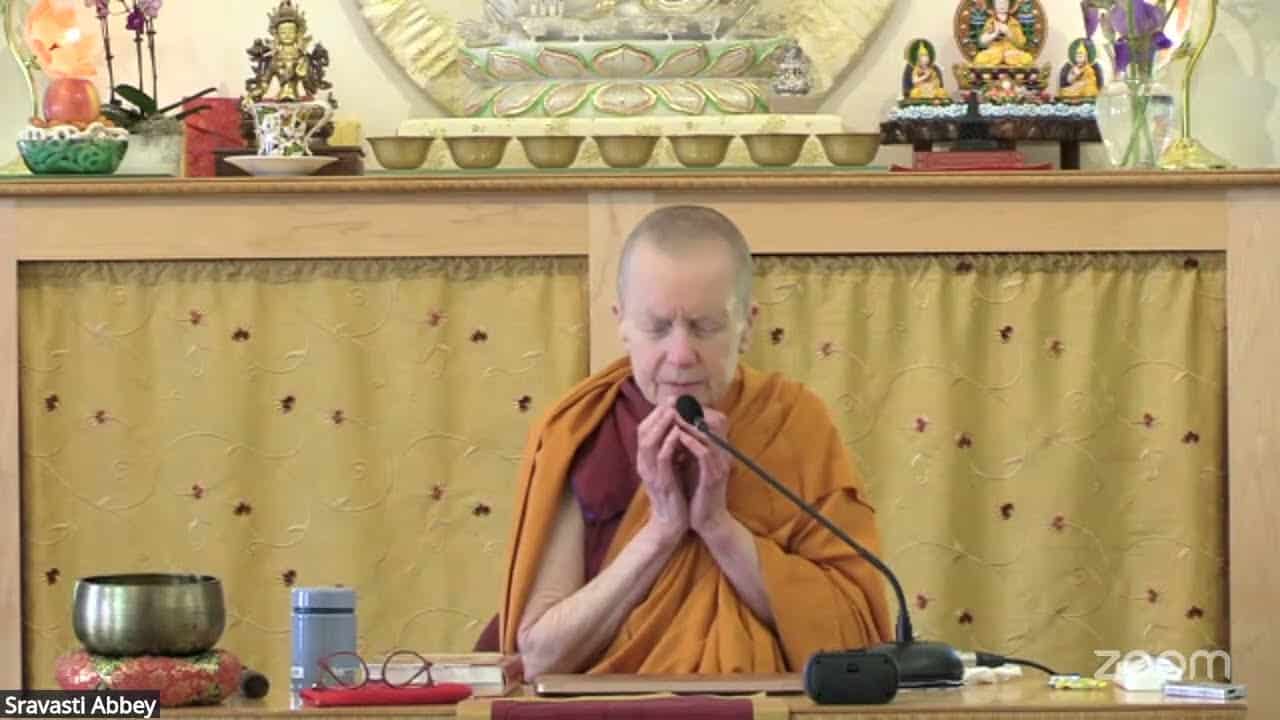The hindrance of desire
54 Following in the Buddha's Footsteps
Part of an ongoing series of teachings based on the book Following in the Buddha's Footsteps, the fourth volume in The Library of Wisdom and Compassion series by His Holiness the Dalai Lama and Venerable Thubten Chodron.
- Structuring the meditation session
- Unbroken continuity in practice
- Six preparatory practices
- Many mini sessions in a long session
- Working with restless body
- Five hindrances and antidotes
- Sensual desire
- Attachment to objects in the desire realm
- Impermanence and unsatisfactory nature of the desired object
- Similes from Nagarjuna’s commentary
54 The Hindrance of Desire (download)
Contemplation points
- Contemplate the recommendations we are given on structuring a meditation session. Why are each of these important in developing serenity?
- Being free from grandiose expectations of quick results
- Have unbroken continuity
- Be sure to do all six preparatory practices
- Place an image of the Buddha in front, make offerings and generate bodhicitta
- Sit in the 7-point Vajra position
- Take refuge and generate bodhicitta
- Contemplate the seven limbs and request inspiration
- Dedicate the merit at the end of each session
- Keep sessions short and increase the duration over time
- Have many sessions in a day with mini-sessions in each
- As your stability on the object increases, have fewer but longer mini-sessions
- What are some of the activities we can do to calm the body’s energy and combat restlessness in meditation?
- Consider how mental restlessness (anxiety, craving for new and exciting experiences, addition to pleasurable feelings and activities that bring them, etc) makes sitting calmly in meditation a challenge. How have you seen this in your own life? It is recommended that we persevere, that as Shantideva says, “There is nothing that does not become easier with practice.” How have you seen this as true in your own life?
- Asanga recommends that before we seriously endeavor to cultivate serenity, we direct our attention to subduing whichever affliction is strongest so that it does not repeatedly interrupt our meditation. Take some time to investigate your own mind. What is the strongest affliction for you? How might first working with this benefit your cultivation of serenity?
- Sensual desire can take different forms: material (such as money, possessions, or food) or social (approval, praise, and reputation). It is the hallmark of most societies. How do you see it operate in the world around you? How do you see it operate in your own life? What are some of the complications that arise in your life when you are caught up in sensual desire? How does it affect your spiritual practice?
- Spend some time contemplating each of Nagarjuna’s similes from the Commentary to the Great Perfection of Wisdom. Look at your own experience, when your mind is overcome with wanting or desiring something. How is sensual desire like each of these similes?
- What are some of the antidotes to sensual desire? Resolve to apply these when desire arises in your mind.
Venerable Thubten Chodron
Venerable Chodron emphasizes the practical application of Buddha’s teachings in our daily lives and is especially skilled at explaining them in ways easily understood and practiced by Westerners. She is well known for her warm, humorous, and lucid teachings. She was ordained as a Buddhist nun in 1977 by Kyabje Ling Rinpoche in Dharamsala, India, and in 1986 she received bhikshuni (full) ordination in Taiwan. Read her full bio.


